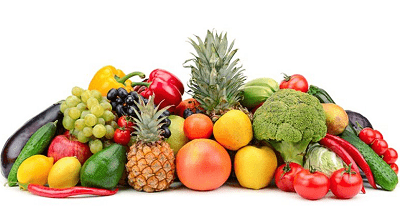
Maturity
Maturity is the basis for determining the exact moment/stage to pick a crop.
The stage at which the crops should be harvested has an important bearing on quality. Good quality is obtained when harvesting is done at the proper stage of maturity. Fruits harvested before optimum maturity may not ripen adequately and may not develop good flavor, while crops harvested late (over mature) will have a shorter post-harvest life and deteriorate easily.
Maturity indices
Maturity indices are the sign or indication of the readiness of the commodity for harvest. Thus, it is the basis for determining harvest date.
Types of maturity
There are three types of maturity which are as follows
- Physiological maturity
- Horticultural/Commercial maturity
- Harvest Maturity

Physiological maturity:
It refers to the stage in developing the fruits and vegetables when maximum growth and maturation have occurred. It is usually associated with full ripening in the fruits. The Physiological mature stage is followed by senescence. For example, A French bean pod of okra is at its physiological maturity when seeds are fully developed, and the pod will dehisce with little pressure.
Horticultural/Commercial maturity:
Horticultural maturity refers to any stage of development when the commodity has reached a level of development sufficient for its intended use. It is sometimes referred to as commercial maturity. For example, A papaya with green pulp and peel that has attained maximum size is already commercially mature as a vegetable. Still, a tinge of yellow color has to develop when it is used for dessert.
Harvest Maturity:
It may be defined in terms of physiological maturity and horticultural maturity. It is a stage that will allow fruits/vegetables at its peak condition when it reaches consumers and develop acceptable flavors or appearances and have a good shelf life. For example, For the local market, and for processing, fully colored tomato fruits are harvested. However, for a distant market, fruit that has started developing color is harvested.
Determination of maturity
Maturity can be determined either by subjective or objective observation. According to Reid (2002), the methods of determining harvest maturity are as follows
- Physical methods: Size, shape, color, texture, etc.
- Chemical methods: Total Soluble Solids (TSS), acidity, etc.
- Physiological methods: Respiration and ethylene production.
- Apart from the above measures, abscission, accumulated heat unit, specific gravity, duration after flowering, firmness, dry matter, juice content, Oil content, waxiness, tenderness, etc., can also determine the optimum harvest maturity stage.
Measures of maturity of fruits and vegetables
Some essential measures of maturity of fruits and vegetables are described in the following.
1. Fruit Color:
Fruit skin or flesh color changes as the fruit matures or ripens. These changes can be determined subjectively by the harvester. However, color meters and color charts have been developed for determining harvest times for apples, tomatoes, peaches, chili peppers, etc. However, some fruits do not exhibit any perceptible color changes during maturation, and thus this parameter cannot be effectively used. Color changes also differ among different cultivars of the same fruit.
For example, the Hayward cultivar of kiwifruit maintains its green flesh during maturation while the ‘Sanuki Gold’ cultivar changes gradually to golden-yellow. Some cultivars of avocado also maintain their green skin color during maturation.
2. Firmness:
Some fruits may change in texture during maturation, and these changes can be used to determine the harvest time. Textural changes are detected subjectively by touch or gentle squeezing. However, objective measurement can be achieved using pressure testers and texture analyzers.
3. Soluble Solids Content and Starch content:
During maturation, starch in non-climacteric fruits is converted to sugars. For climacteric fruits, starch accumulates during maturation. Therefore, harvest maturity can be determined by measuring the sugar content or starch content. Usually, the sugar content is measured in total soluble solids content using a Brix hydrometer or refractometer. Starch content is measured using iodine to qualitatively determine the amount of starch. This method is used in determining the maturity of pear cultivars, whereby the fruit is cut into two and dipped into a solution containing potassium iodide and iodine.
4. Number of days from fruit set:
Fruit set refers to the transition of a flower to fruit after fertilization. It usually involves rapid cell division and expansion of the ovary and the development of seeds. In some fruits, the time taken between fruit sets until the fruit starts showing signs of maturity has been recorded, which can be used to determine harvest time.
For instance, in Alphonso and pairi mango varieties, it takes about 110 to 125 days after fruit set for surface color to change from dark green to olive-green and flesh color from white to pale yellow (Bhatnagar and Suramanyam, 1971). On the other hand, Tandon and Karla (1986) concluded that Langra and Mallik took 84 and 96 days after fruit set respectively to attain harvest maturity.
5. Specific gravity:
The specific gravity of fruit can be considered an index for maturity grading. Water has a specific gravity of 1.00, and common salt solution (2.5% NaCl) has a specific gravity of 1.02, and both are used in the maturity grading of mango fruits (Kapsa and Katrodia 1997). e.g., the specific gravity of mango range between 1.01-1.02.
Final Words
In summary, the maturity of fruit at harvest will significantly affect their quality along the post-harvest value chain. Therefore, accurate, efficient, and effective maturity indices must be applied to ensure high quality at all levels along the value chain. It is worth noting that a single maturity index cannot predominately determine the maturity of fruits. Therefore, it is advisable to use different parameters simultaneously to improve the accuracy of the determinations. Furthermore, one maturity index cannot be applied across all cultivars of the same crop. This is because there are slight differences among the cultivars.